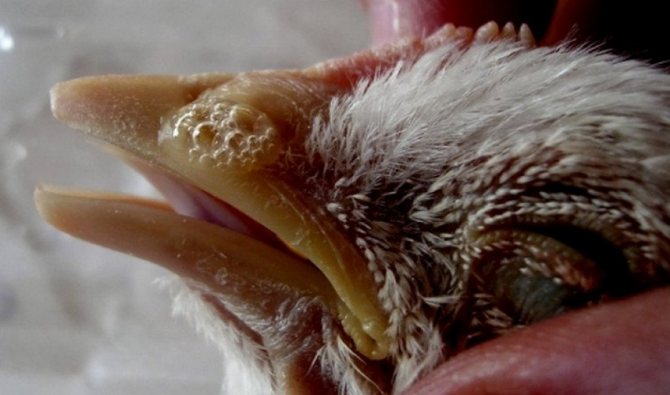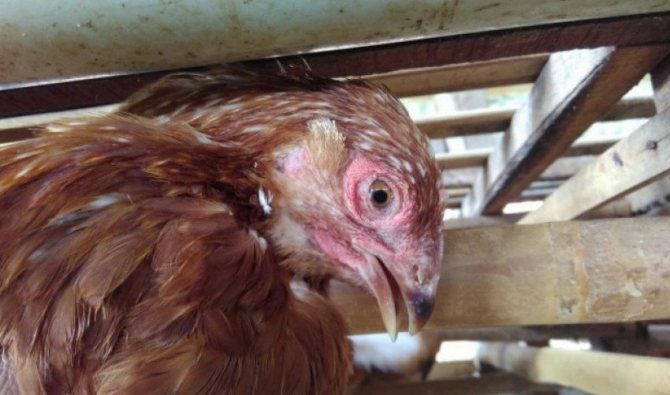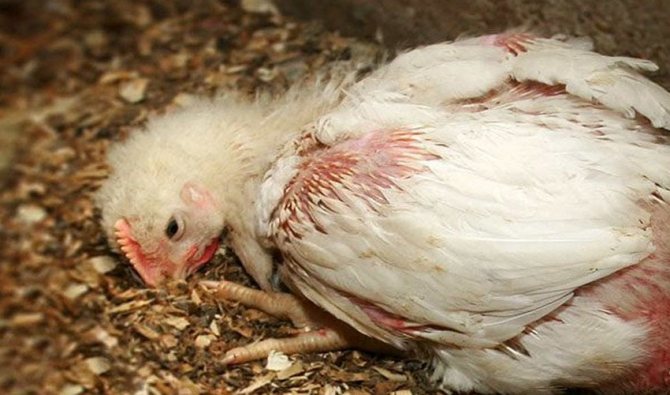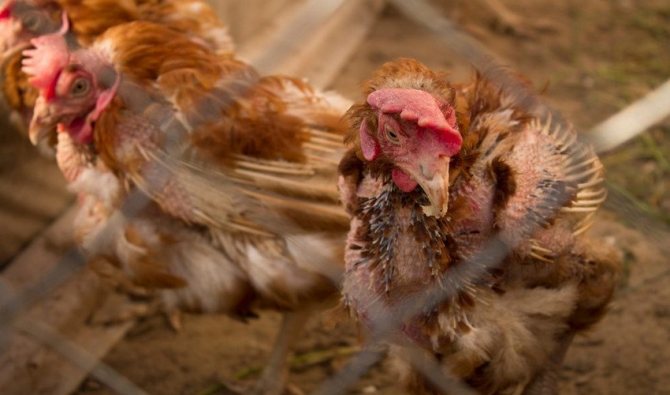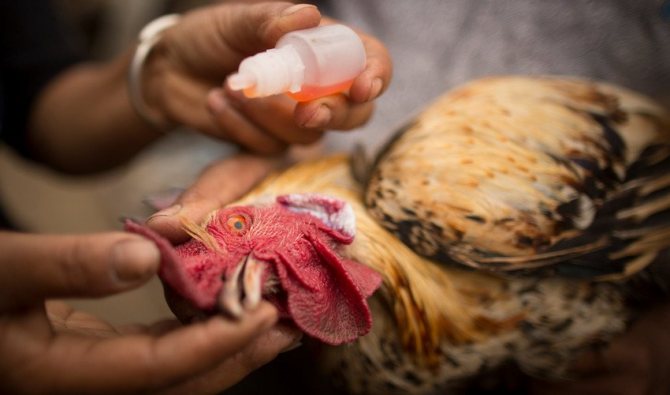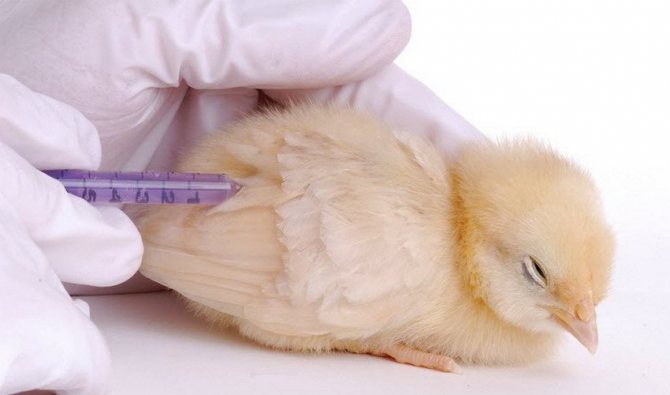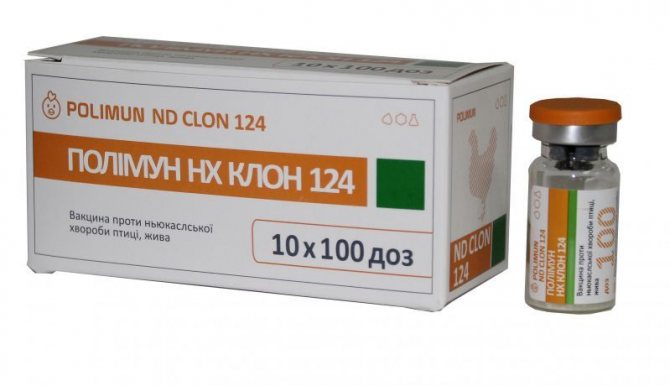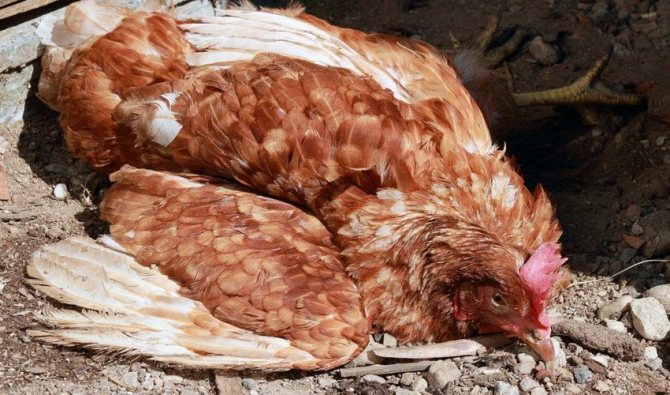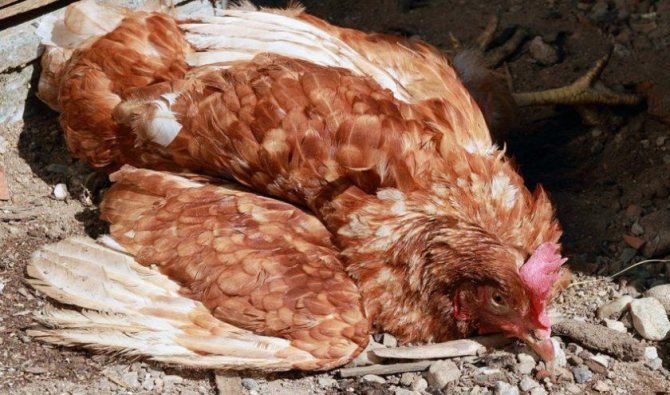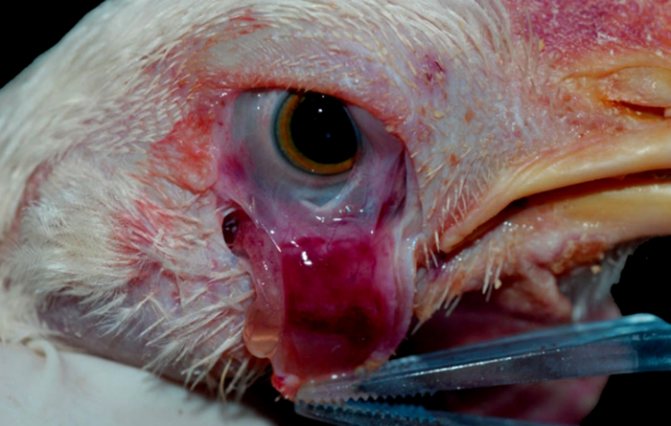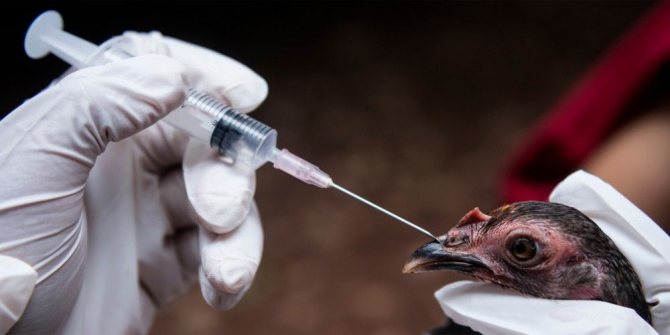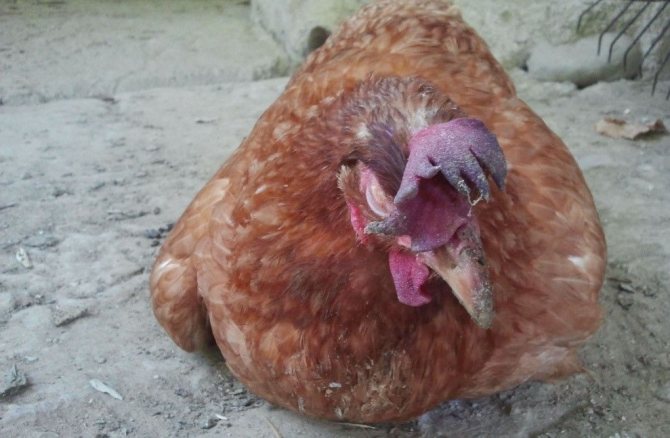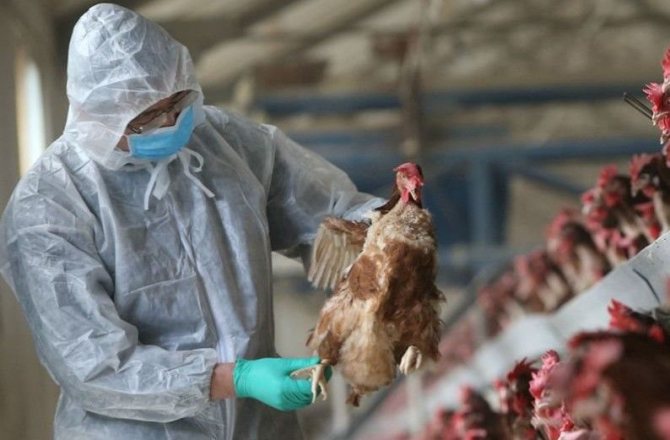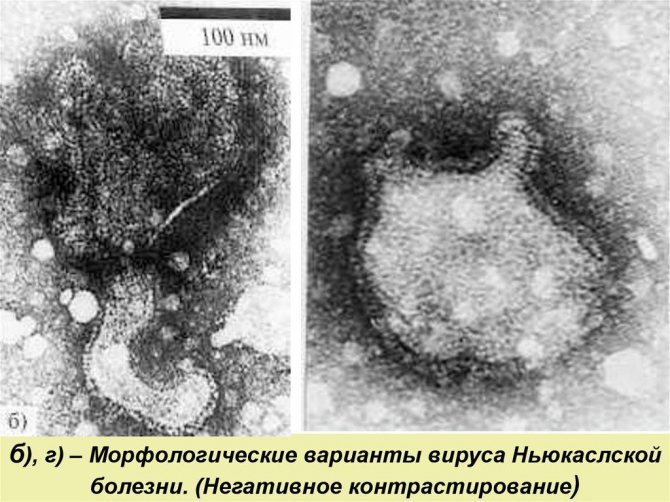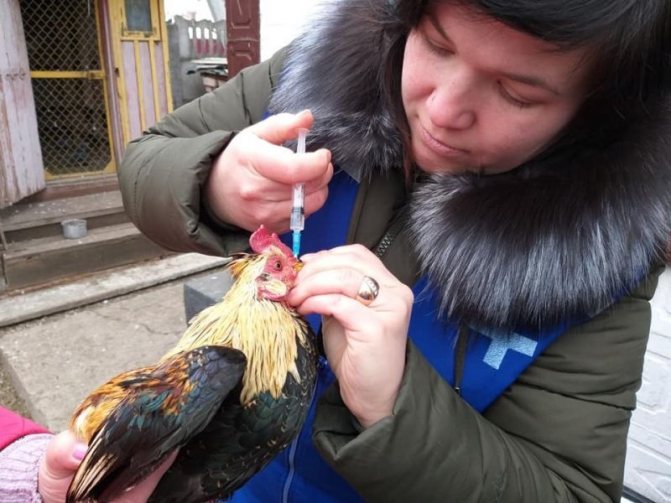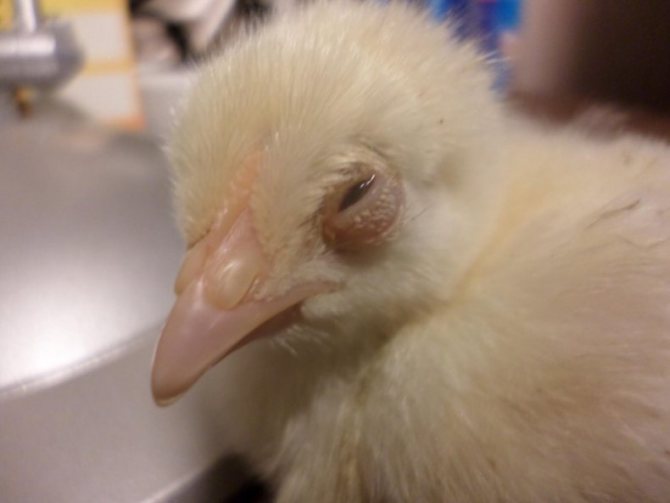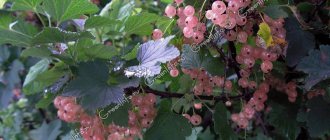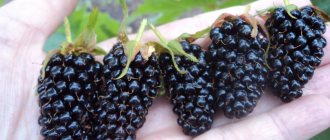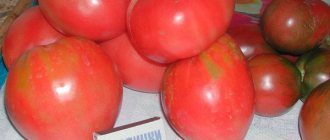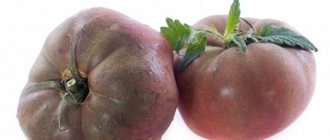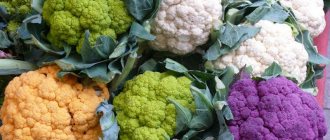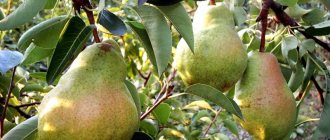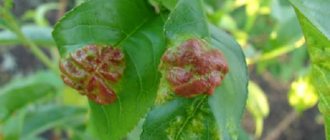Newcastle disease (other names - whirligig, pseudo-plague, Asian avian plague, pneumoencephalitis) is a serious infectious disease that affects the internal organs, nervous and respiratory systems.
The causative agent of the disease is the paramyxovirus PMV-1, characterized by a large number of unlike strains. Because of this, the disease takes various forms, sometimes “disguising itself” as cholera, bronchitis, bird flu or laryngotracheitis. Only an accurate diagnosis can help identify Newcastle disease.
The disease affects poultry of all ages and breeds, but most often Newcastle disease is diagnosed in domestic chickens. Outbreaks of the disease are recorded all over the world, which causes many problems for large poultry farms.
For humans, Newcastle disease is not dangerous, but after contact with an infected individual, a malaise resembling the beginning of the flu may appear. The characteristic features of Newcastle disease in birds are encephalitis, pneumonia and hemorrhage into internal organs due to their damage.
Causative agents of the disease
Newcastle disease is caused by a paramyxovirus containing RNA. The virus is round or rod-shaped. It depends on the type of virus, strain. Each strain is characterized by certain symptoms and the degree of pathogenicity (the severity of the course of the disease). Some of them are practically harmless, others are deadly.
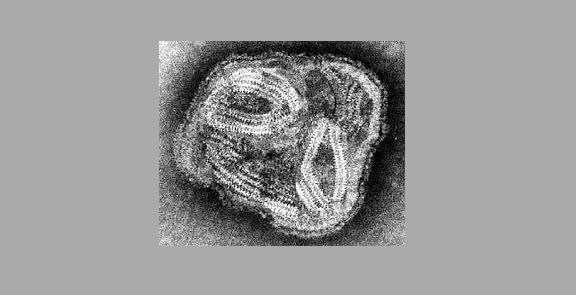
Paramyxovirus causing Newcastle disease
According to the degree of pathogenicity, the following strains of Newcastle disease are distinguished:
- velogenic (with the highest degree of pathogenicity);
- mesogenic (medium);
- lentogenic (low degree).
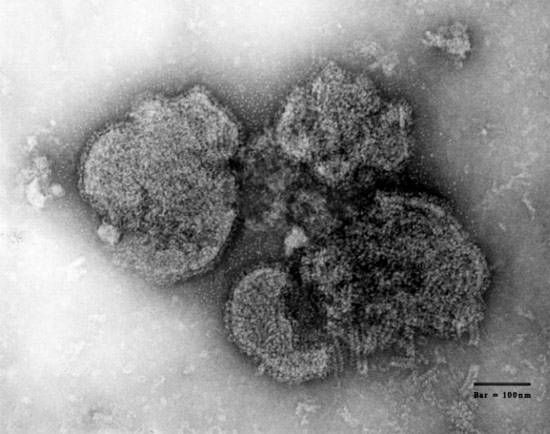

Newcastle disease strains are highly resistant
All strains have a common property - resistance to external influences of a physical and chemical nature. They are able to maintain their viability for a long time:
- in the habitat of the bird in cold weather - up to 5 months, in summer - up to 7 days;
- in the buried infected bodies of birds - up to 1 month;
- in the dried organs of an infected bird at a temperature of about + 18 ° C - up to 2 years;
- in frozen carcasses of carriers of infection - 1-2 years;
- in the body of tick carriers - more than six months;
- in the litter of a sick bird - about 20 days;
- when boiling an infected carcass - up to 60 minutes.
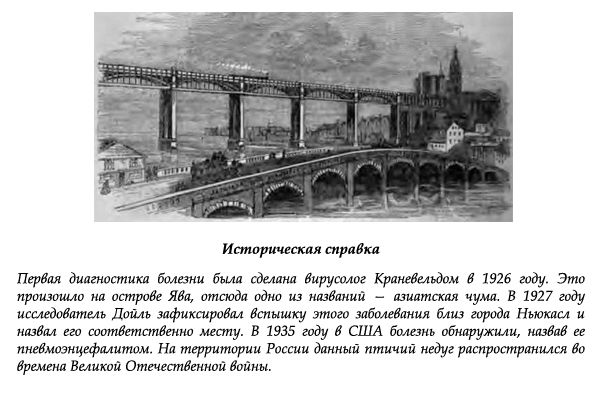

Newcastle disease discovery history
Which birds are at risk?
Absolutely all birds are susceptible to the Asiatic plague. And if there is no way to take care of wild individuals, then domestic and agricultural birds should be especially protected from this virus.
Most often, chickens are infected (chickens, partridges, turkeys, guinea fowls, etc.). Newcastle disease threatens, albeit to a lesser extent, pigeons, parrots, sparrows, hawks, ostriches.
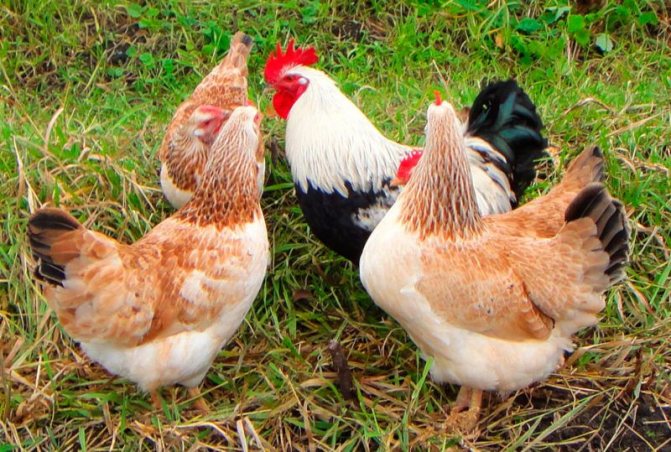

Chickens are more susceptible to Newcastle disease than other birds
Organisms of geese and ducks are resistant to strains, but they are vectors. Laying hens act both as victims of the virus and as its carriers.
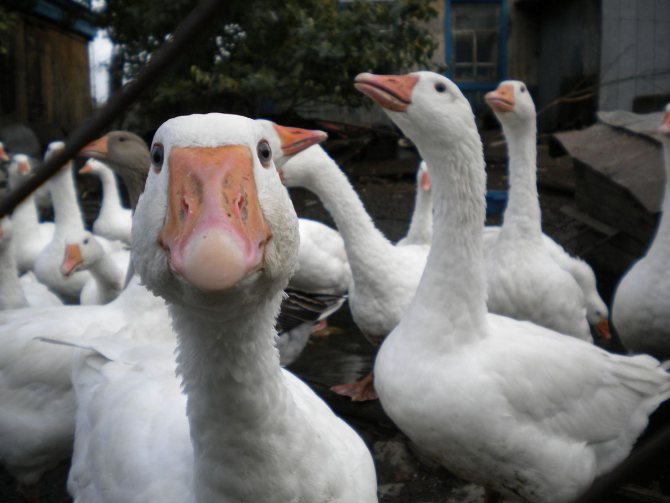

Geese and ducks are resistant to paramyxovirus, but are carriers of it
Young animals become infected more often than adults. Birds with weak immunity also catch the disease easily.
The virus can infect both some primates and humans.But for them it is not fatal, the disease proceeds as a simple respiratory infection. But it should be treated promptly so that the virus does not spread to its main victims - birds.
From the medical history
Like many other infections, Newcastle disease (chicken plague, Asiatic plague, pseudo plague) originated in Indonesia. It was registered there in the early years of the 20th century. After a short interval, the first sick birds were found in England, near Newcastle. Hence the name of the disease.
From the UK, the infection enters the United States. During World War II, Newcastle disease spread throughout Europe and the Soviet Union. Unfortunately, over the years, it has not been possible to get rid of chicken plague. In 2014, the disease was recorded in Dagestan and some regions of Russia. It touched such areas:
- Saratov;
- Ivanovskaya;
- Kaluga;
- Penza;
- Pskov and Krasnoyarsk Territories.
Due to the fact that chicken plague is an insidious infectious disease, poultry farmers must understand the symptoms, preventive measures and treatment of chickens at home.
What is Newcastle chicken disease:
Comment! The person is not infected, but malaise, as well as mild conjunctivitis, can be observed.
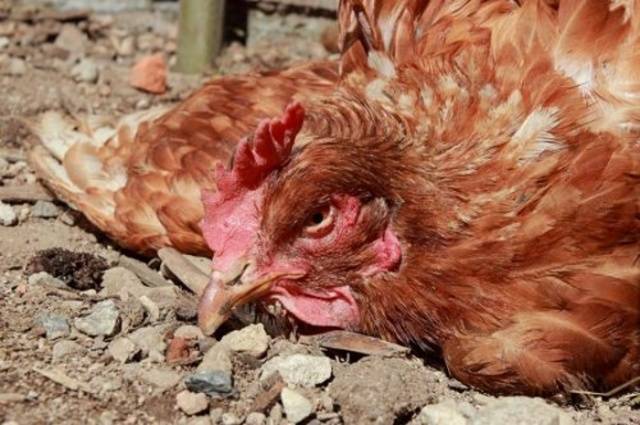

The spread of the virus
The source of the pathogen is an infected or recovered individual. From her body, strains are released into the environment during respiration, with secretions, eggs.
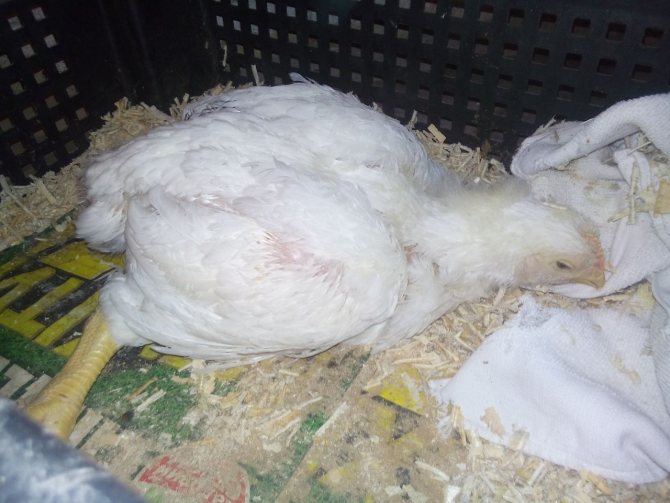

An infected broiler is a source of the virus
Carriers of infection: birds, humans, rodents, insects, domestic animals.
The virus is transmitted through:
- food products obtained from infected poultry (eggs, meat);
- raw materials from the habitat of a sick individual (down, feathers, food, water, perches, bedding);
- inventory that was in the infected place;
- the poultry worker's clothing or footwear;
- the corpse of a sick chicken, turkey, etc.
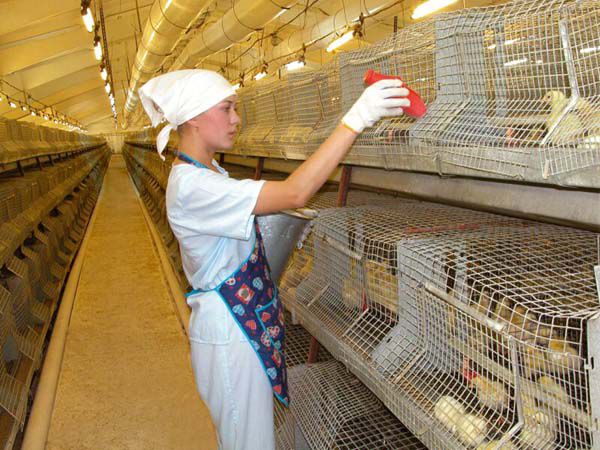

Paramicroviruses can be transmitted through the clothing of poultry workers
Within a day after entering the body, the virus is able to spread further through a new carrier.
Attention! Researchers have found that the radius of exposure to infection can reach ten kilometers!
In poultry houses, the virus is transmitted through the ventilation system and quickly leads to a massive death of individuals.
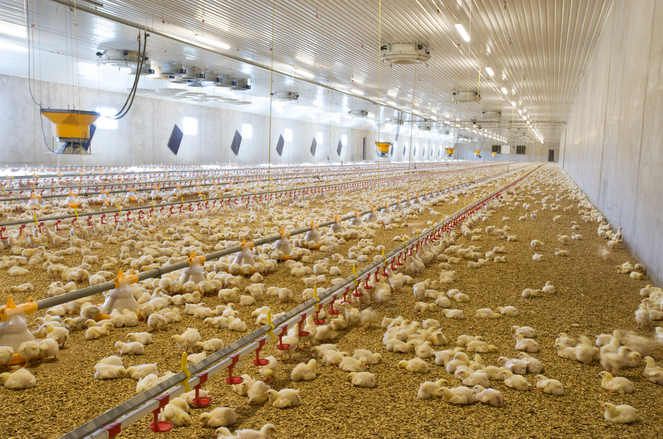

The ventilation system of the chicken coop promotes the spread of the virus
Newcastle disease is often intermittent. This is explained by the fact that it is difficult to get rid of the causative agent of the virus completely: it remains viable for a long time without visible signs in the host's body and in the external environment. Faced with this ailment once and not taking all the preventive measures properly, be prepared for a repeat of history.
Pathogens are especially often activated in summer and autumn, when the number of poultry is maximized.
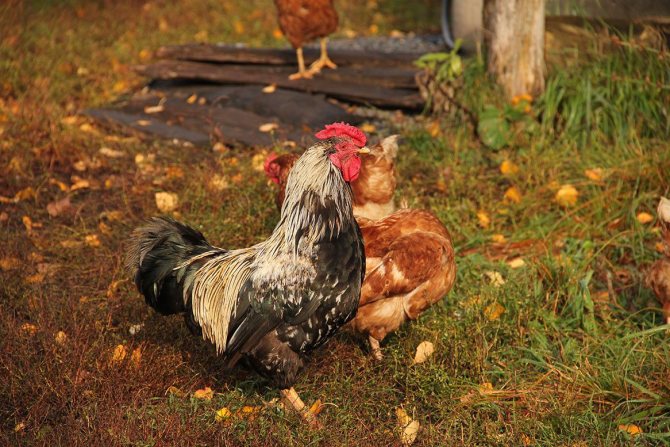

Newcastle virus activates in summer and autumn
If chickens and other birds are not vaccinated, then the probability of infection is maximum - 90-100%. Moreover, a lethal outcome is guaranteed in 40-80% of cases.
Sources of infection
Strains of the virus of the paramyxovirus family containing single-stranded RNA are the infectious agent of Newcastle Disease.
Attention! Chickens are highly susceptible to the virus, young animals are especially sensitive. There are outbreaks of disease in chickens when adults remain healthy. Ducks and geese show resistance to pseudo-plague, but are carriers and conductors of infection.
Source of infection - infected poultry: sick, during the incubation period, having undergone the disease, latent carrier. Rodents, ticks and wild birds also spread the infection.
The virus is present in the saliva and blood of chickens, as well as in all organs, the contents of the intestines, and penetrates the eggs.
The day before the onset of symptoms, the pathogen begins to excrete with saliva and feces, infects surrounding objects, food and water.
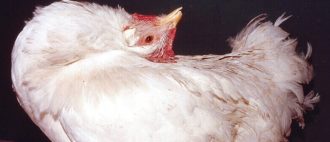

When dry, the particles are mixed with dust, which is inhaled by chickens, and settles on the feathers.
The virus enters the bird's body:
- through the respiratory system (aerogenic);
- through the esophagus (the alimentary route is less common).
Isolated cases - infection through small wounds on the body and oral mucosa.
The transmission factors are:
- raw materials and products of poultry farming;
- uncontaminated clothing or footwear used in the poultry farm;
- transport and containers in which eggs and poultry are transported;
The movement of the pathogen over considerable distances is facilitated by the operation of the ventilation systems of the poultry house: when the wind blows, the viruses fly up to 5 kilometers.
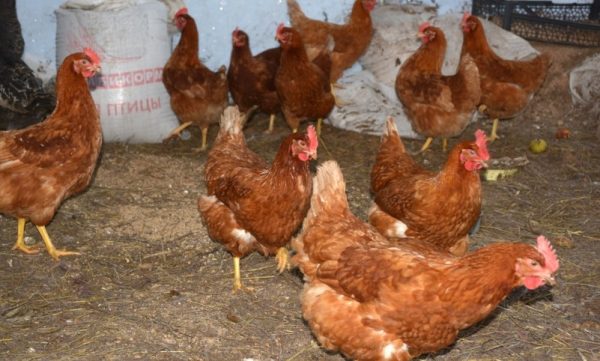

The bird that died from Newcastle disease is disposed of, sick individuals are transferred to a separate room
Symptoms and course of Newcastle disease
The incubation period of the disease is short. It lasts from 3 to 12 days. The clinical picture may vary. It is determined by the specific strain that the bird has infected. The age and physiological characteristics of the individual, the conditions of keeping in the poultry house are decided. Nevertheless, the disease can be diagnosed by signs characteristic of all its forms.
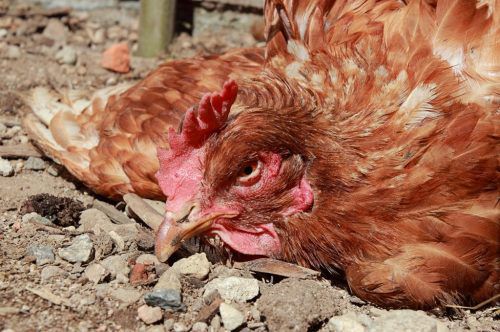

Sluggish chicken, sick with pseudo-plague
Common Symptoms of Newcastle Disease
Pseudo-plague is accompanied by the following changes in the behavior and condition of the bird:
- high temperature, up to 44 degrees;
- loss of appetite;
- refusal to drink;
- decreased activity, mobility, apathy, drowsiness;
- blurred vision, conjunctivitis;
- breathing problems, "coughing", cough;
- mucous discharge from the beak;
- loss of healthy coordination of movement, up to paralysis;
- bowel disorders, diarrhea may be yellowish-green in color, mixed with blood.
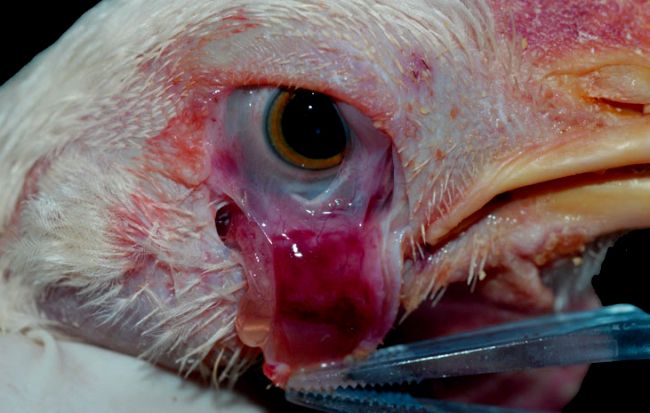

Bird conjunctivitis
All birds show signs of infection in the same way. The symptoms of Newcastle disease in chickens are the same as in a pigeon or turkey.
How does the virus proceed?
The course of the disease can take several forms. The differences between them are presented in the table. The characteristic features of the type of disease are determined by the strains.
| Form - characteristic | Lightning fast | Acute (velogenic) | Subacute (mesogenic), pseudoencephalitis | Chronic (lentogenic) | Atypical (asymptomatic), immunogenic subinfection |
| The strains that caused the disease | all highly pathogenic | highly pathogenic Asian strains | mesogenic | lentogenic | weakly virulent |
| Who is affected | unvaccinated and weak individuals | unvaccinated birds | vaccinated chickens and chicks of other birds | birds with strong immunity | young |
| Death after infection | after 2-3 hours | in 3 days-week | on average after a week | after 5-12 days | rarely happens |
| The likelihood of death | 100% | can reach 100% | 50% and below | from 15 to 30% | no more than 15% |
| The main symptoms | no symptoms | all common are pronounced | cough, choking, irritability, convulsions, severe exhaustion | excitability, convulsions, rapid exhaustion | decreased egg production, characteristic signs are not expressed |
The methods of dealing with any form are the same. But the more severe the course of the disease, the faster you need to act in the fight against the disease.
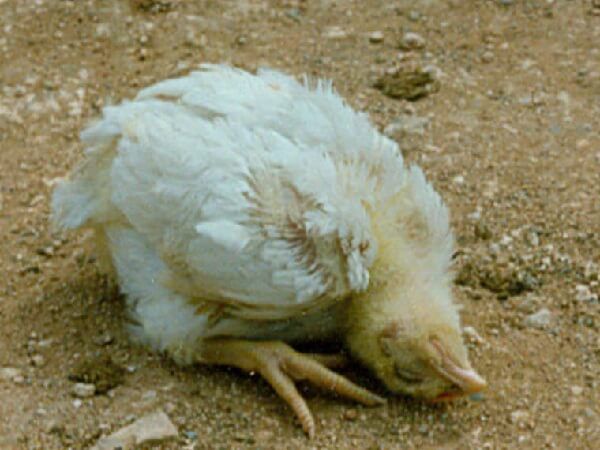

Twisting the neck of a sick bird
Diagnostics
After examining the inhabitants of the poultry house and even after opening the deceased individual, only a preliminary diagnosis can be made based on clinical signs and pathological and anatomical changes.
At first, it is important to differentiate the disease. You need to be able to distinguish it from flu and bronchitis of chickens, smallpox, pasteurellosis, poisoning, paramyxovirus infection, infectious bursitis and laryngotracheitis, etc.
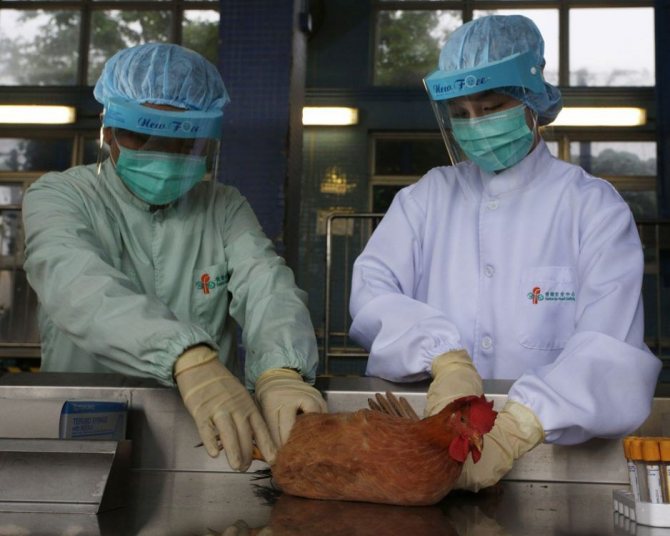

Only a veterinarian can make an accurate diagnosis.
An accurate diagnosis can be made with an integrated approach.You need to do detailed laboratory tests, which will be prescribed by the veterinarian.
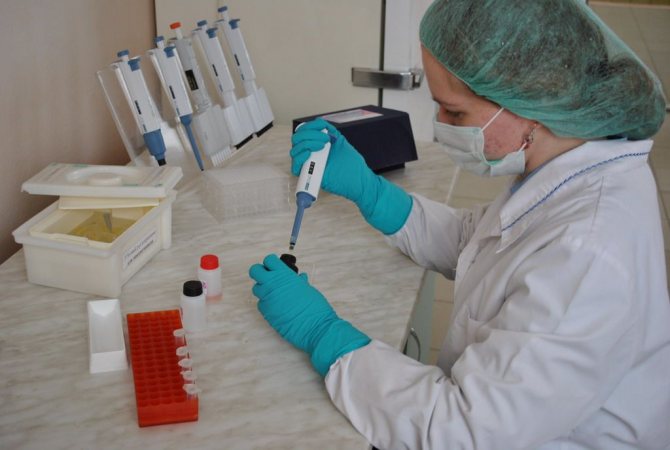

Laboratory research is an important part in diagnostics
Video - How to diagnose a bird?
Treatment
After a preliminary diagnosis, which is made by the veterinarian after examining the livestock, it is necessary to carry out a number of laboratory examinations to specify the type of disease. After carrying out bacteriological inoculation, final conclusions can be drawn.
Treatment of already sick individuals is not an expedient process, since there is an acute threat to the life of the remaining, not yet sick chickens. Therefore, all birds that are already sick must be destroyed.
The strangulation method is used. All healthy birds must be isolated and vaccinated against the disease. The coop should be thoroughly disinfected with chemicals.
If the doctors confirmed the diagnosis and diagnosed Newcastle disease, then quarantine begins on the farm, in which it is necessary to follow such rules as:
- Individuals cannot be taken out or brought into the farm.
- It is excluded to sell incubation material.
- It is forbidden to sell meat, eggs and other products from the farm.
- Unauthorized people are not allowed to enter the house.
The quarantine lasts about a month, the countdown begins from the day the sick chickens are disposed of, and ends with a final thorough disinfection.
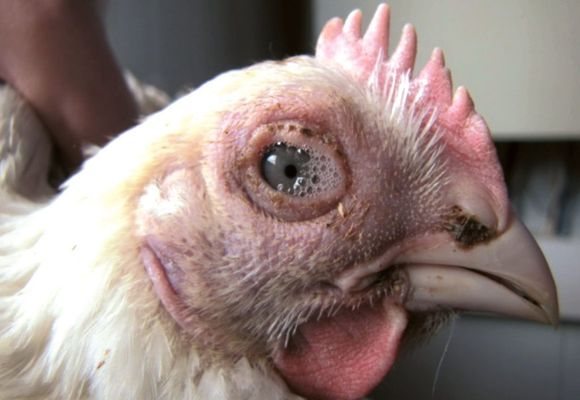

How to deal with the virus?
There are no special drugs for pseudo-plague. It is not advisable to treat a sick bird, especially when it comes to poultry farming. This can be fraught with infection of the entire livestock. Therefore, they get rid of the sick individual by suffocation. After that, it should be buried deeper and covered with quicklime to completely destroy the pathogen. You can burn the corpse.
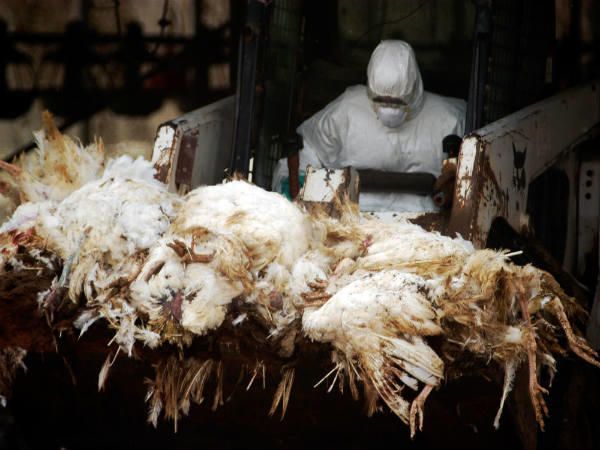

Sick birds must be slaughtered
The best way to fight the virus is vaccination. It is also important to follow general preventive and disinfecting measures.
Vaccination
It is obligatory for poultry to carry it out from 4 months of age, it is better twice. Vaccination at the age of one month is possible. It is enough to vaccinate broilers once from the tenth day of life. Adults are vaccinated when urgently needed, since the procedure reduces the productivity of layers and other birds.
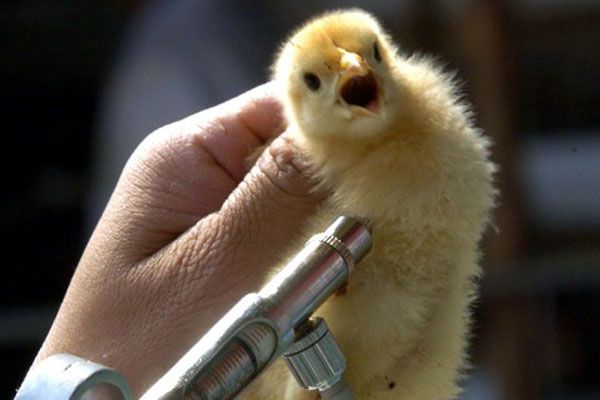

It is enough to vaccinate broilers once from the tenth day of life.
Vaccination is desirable in spring and autumn. Immunity after using the drug occurs on the third or fourth day. Protection can be provided for a period of 2 to 12 months. The period depends on the type of vaccine, the age of the birds, the quality of food and maintenance.
Important! Do not forget to enrich the diet of birds with vitamins A, B and D before and after vaccination, to strengthen the immunity and general health of birds. Vitamin groundbait should be done for at least 10 days.


Vitamin complex Trivitamin
Types of vaccines
Protection drugs differ in their degree of aggressiveness. In total, there are three groups of vaccines against pseudo-plague:
- inactivated;
- living naturally weakened;
- living laboratory-weakened.
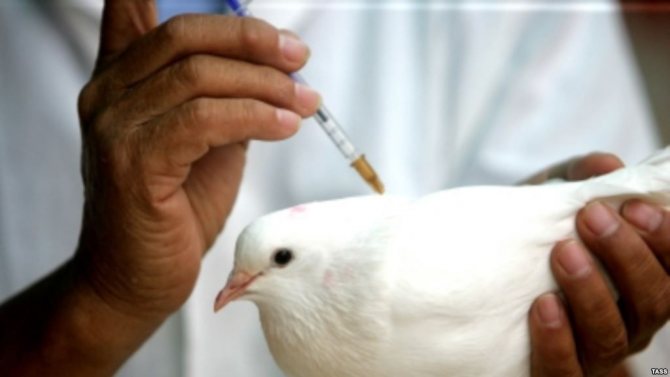

Vaccination of pigeons
Inactivated drugs the safest for birds, suitable for fighting multiple infections. They have a mixed composition with strains.
Live vaccines give protection quickly, but not as long. The validity period is usually 2-3 months. They are made on the basis of the strains La Sota, N, Bor-74, HB1, V4, VG / GA, Ulster 2C, PHY.LMV.42.
Live vaccines are reactogenic: they cause complications in the form of respiratory diseases, decreased productivity. To avoid unpleasant consequences, it is important to follow the instructions for use and not skimp on vitamin baits.
On a note! For more than 10 years in Europe, there has been a ban on the introduction of vaccines based on the La Sota strain due to its high reactogenicity. In the Russian Federation, preparations with its content are used everywhere in the poultry industry and are recommended by veterinarians.
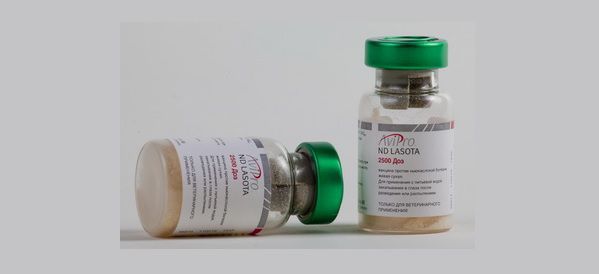

The LaSota strain is banned for use in Europe
Recommendations
There are currently dozens of drugs available to vaccinate birds against Newcastle disease. There is no significant difference between them. But a few nuances are worth considering:
- for vaccination of day old chickens, do not use drugs with VH, C2, B1, Hitchner strains, they can adversely affect development;
- in a rural courtyard, the strain Clone-30 will be ineffective. It is suitable for vaccination of individual birds, domestic parrots, for example;
- in a situation of a large outbreak of the virus, it is recommended to use drugs containing H and GAM-61 strains;
- in rural farmstead vaccines are often used containing the strains La Sota and Bor-74 ("VGNKI", "ARRIAH", "Avivak", etc.);
- Please note that the preparations have different dosages (100, 200, 5000 doses, etc.), follow the instructions in the instructions.
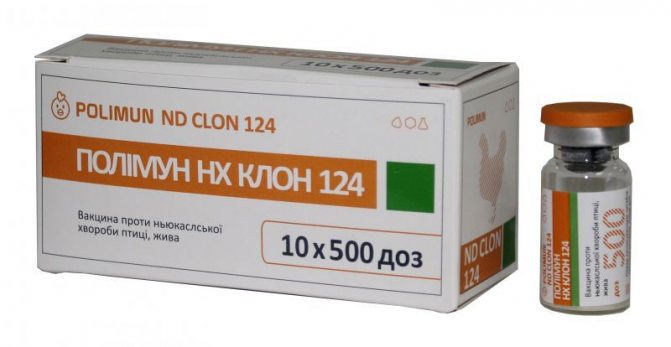

Newcastle disease vaccine
How to vaccinate?
Depending on the scale of the infection, the age of the birds and the severity of the infection, vaccination can be done by the following methods:
- by spraying a one-day-old individual with a spray;
- individual instillation into the nose or eyes (intranasal or ocular method);
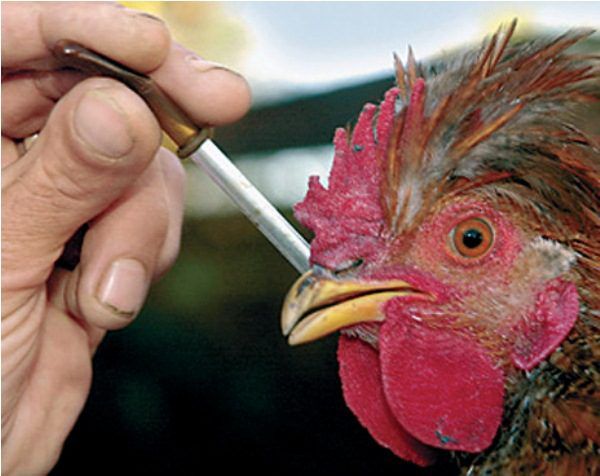

Vaccination by individual instillation
- watering, if the livestock is infected (enterally).
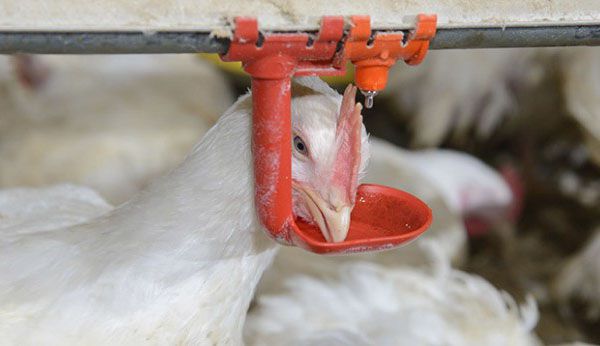

Boil vaccination
How to spray chickens with coarse droplet vaccine?
Step 1. Turn off ventilation in the house to reduce airflow and reduce the risk of virus strains traveling.
Step 2. Put day old chicks in a box. If there are several boxes with individuals, then put them tightly one to one. There are special spray booths for these purposes, they are already equipped with sprayers.
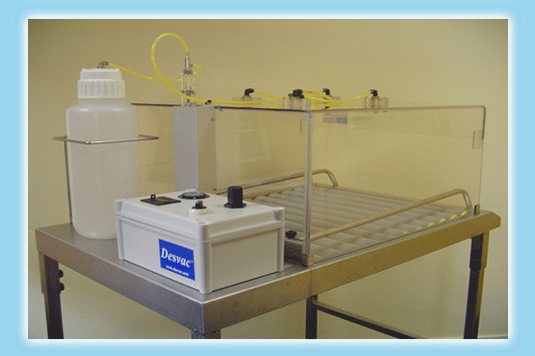

Vaccination spray booth
Step 3. The vaccine is dissolved immediately before use at the rate of 1000 doses of the drug per 200 ml of water for day old chickens. If you plan to vaccinate older chicks, this dosage goes by one liter. The temperature of water free of chlorine and iron should be between 21 and 28 ° C.
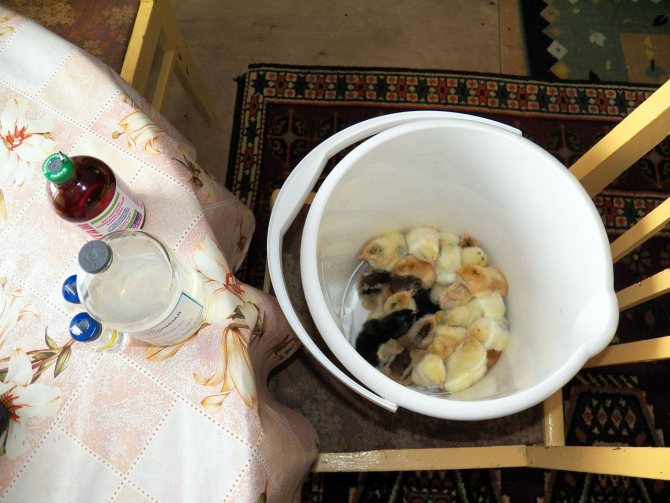

Preparing to spray the vaccine on chickens
Step 4. Dim lights to calm bird agitation.
Step 5. Pour the solution into the built-in nebulizers in the booth, or any other non-special spray structure. The main requirement for the container is corrosion resistance and sterility.
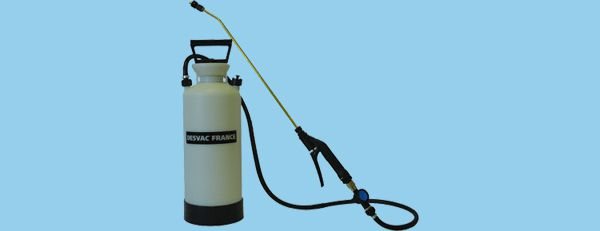

Hand Operated Aerosol Sprayer
Atomizer prices
Spray
Step 6. Spray the vaccine evenly from a height of 30-40 cm above the chicks.
After the procedure, it is worth keeping the treated individuals isolated for at least 3 days.
How to instill?
Step 1. Pour sterile saline solution into the vaccine bottle. Calculation: 0.1 cm3 per dose (intranasal or ocular).
Step 2. Pour the prepared solution into a sterile pipette.
Step 3. Drop two drops into one nasal slit, and close the other with your finger at this time. If the nasal slits are blocked, the eyes are buried in the same way.
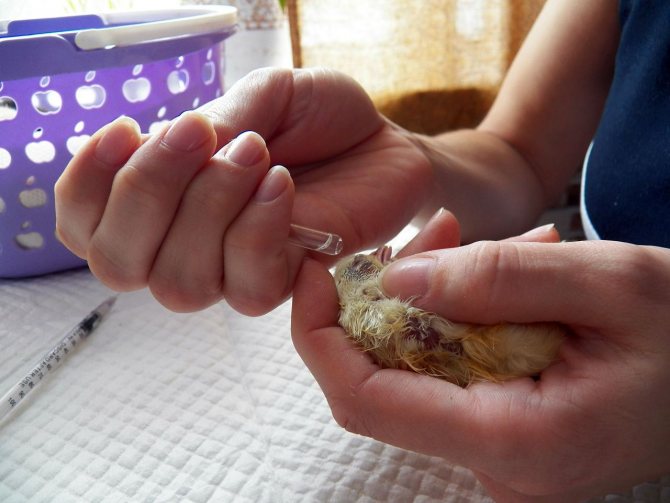

Burying the eyes of a chicken
How to solder?
Step 1. Calculate dosage. To do this, track how much water one individual drinks in 1.5 hours. For this volume, 10 intranasal doses are sufficient.
Step 2. Limit access of birds to water. Keep meat birds away from drinkers for two to three hours. Leave hens without water for 6-8 hours.
Step 3. Wash all drinkers thoroughly. Do not disinfect.
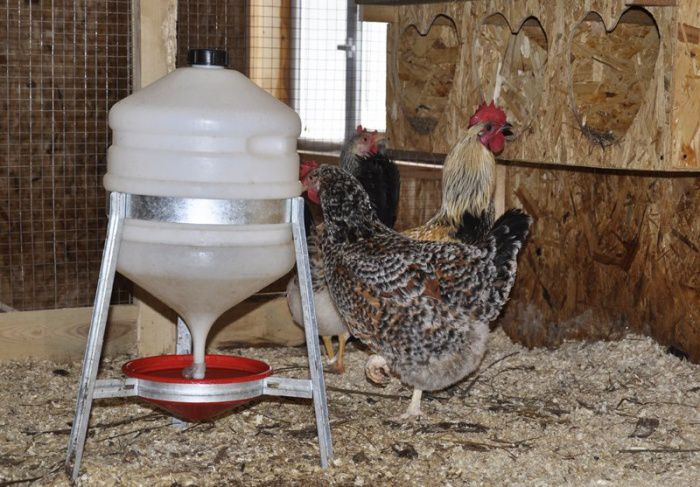

All drinkers must be thoroughly washed before vaccination.
Step 4. Dilute the vaccine in clean water, free from iron and chlorine. Its temperature should be room temperature, up to 25 ° C. We prepare a solution for all livestock in compliance with the dosage (see Step 1). You can add skimmed milk powder (calculation - 5%) to it for better dilution.
Step 5. Fill all drinkers with ready-made solution and open access to them.
Step 6. Give ordinary drinking water two hours after the vaccinated person is drunk.
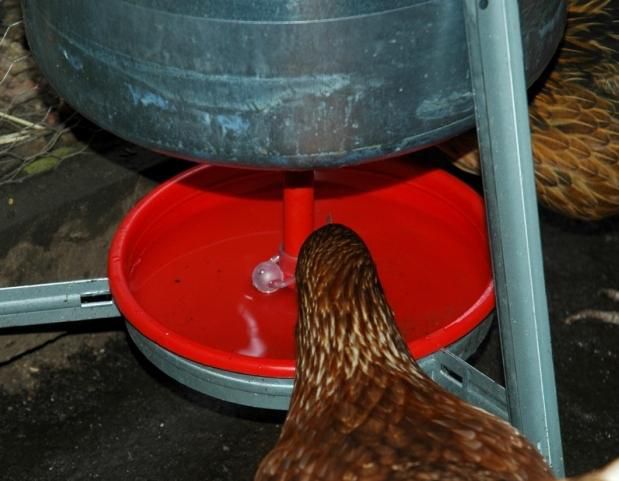

Plain water is given after the vaccinated is drunk
The following vaccination guidelines provide general guidelines. Be sure to read the instructions for the specific drug used and follow it.
Features of the course of the disease
The clinic for Newcastle disease is different, depending on the form and strain of the virus.If the birds are vaccinated, then they are resistant to the disease. Infection of chickens manifests itself after 3-10 days.
If the birds have not been vaccinated, then after three days all birds can be affected by the acute form. After 3 days, 100% of the chickens die
Newcastle disease affects the nervous system of chickens, so their coordination is impaired, the neck bends and twists. The head constantly twitches, seizures may occur, birds wheeze and cough. Conjunctivitis develops before our eyes.
Attention! Vaccinated chickens, although they get sick, are in a milder form, the mortality rate is no more than 10-15%.
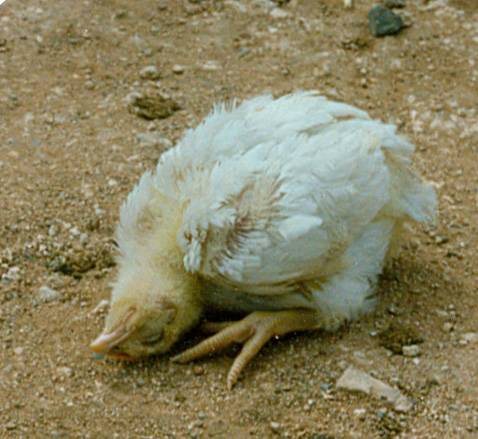

Preventive measures
Vaccination is not the only or primary means of fighting Newcastle disease. It is imperative to follow preventive measures in order to prevent the appearance of the virus.
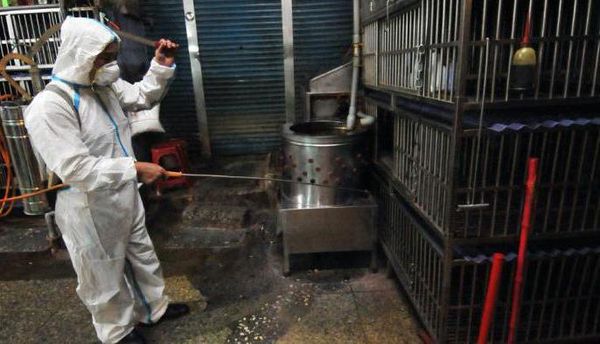

Poultry disinfection
The complex of sanitary and veterinary standards includes:
- disinfect the house twice a year (phenol, ethyleneimine, chloroform, formaldehyde, betapropiolactone, etc., the concentrations are generally accepted);
- if it is impossible to provide access to sunlight: use of lamps with ultraviolet radiation in the habitat of chickens and other birds (it is detrimental to strains of pseudo-plague);
- ventilation openings and windows of the bird habitat should be covered with bars to prevent the entry of infected wild birds;
- in a large farm with several poultry houses, there must be separate labeled overalls for each room;
- new imported livestock cannot be immediately placed with the old one; it should be kept isolated for a month;
- poultry meat and eggs are treated with boiling water before use.
Prophylaxis
To prevent an outbreak of Newcastle disease, there are a number of rules to follow. The room where the chickens are kept must be thoroughly disinfected periodically. Ultraviolet light copes well with infection, therefore it is recommended to install special lamps in the poultry house. To minimize the likelihood of the disease, it is recommended to carry out preventive vaccination in time.
It is also important to completely exclude contact of domestic chickens with wild birds and animals that may be carriers of the infection.
Pseudo-plague, or Newcastle disease in chickens, - acute infectious pathology leading to mass mortality of poultry.
The disease is characterized by the formation of multiple hemorrhagic formations in the digestive system, the development of catarrhal inflammation in the respiratory organs and pseudoencephalitis.
For the first time the disease was registered in 1926 on the island of Java, then outbreaks of the epidemic were recorded in Asia, Europe and the United States.
In the UK, a focus of infection was discovered near the city of Newcastle, so the disease got its name.
Quarantine
If, after laboratory tests, an official diagnosis is made, then the entire farm is quarantined for a period of 1 month. Notification of the virus to local authorities, veterinary services, supplying farms and partners (in the case of an enterprise) is mandatory.
At this time, the territory of the poultry farm is fenced off, the access of unauthorized persons is blocked. They suspend the supply and export of birds, stop trading in meat and egg products, down, feathers. Incubation of eggs is prohibited.
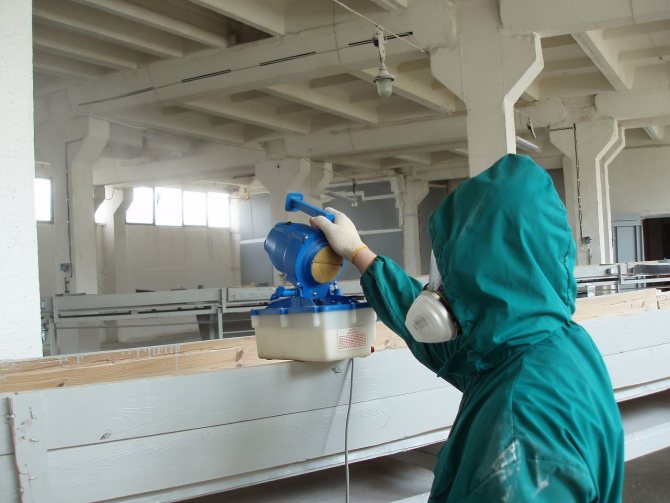

Disinfection at the poultry farm
All sick and young individuals, as well as "possibly sick", are subject to destruction. This should be done in a bloodless way, strangulation is recommended. To prevent the spread of the causative agent of the disease, during the process, windows, doors, hoods must be closed. After the corpses are immediately destroyed in incinerators or in pits. The depth of such holes should be from 2.5, width - from one and a half, depth - not less than 0.7 meters. The place of destruction used in this inventory must be disinfected after the destruction of the birds.
A clinically healthy adult bird is vaccinated and kept in isolation. Even uninfected individuals in quarantined farms have been shown to be slaughtered. The meat of such birds must be carefully processed (boil for at least an hour) before eating.
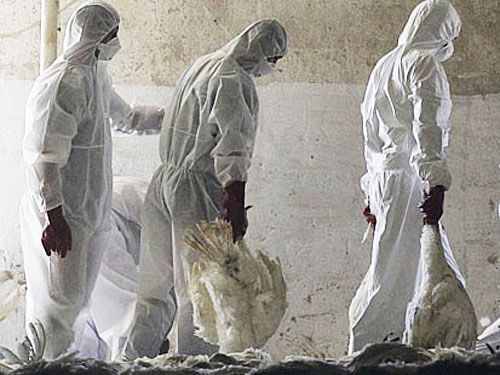

All birds are to be slaughtered in quarantined farms
Previously vaccinated healthy birds in an infected poultry house can be revaccinated.
Before the end of the quarantine, a complete disinfection of the house is carried out.
Attention! Metal equipment is not resistant to chlorine and caustic alkali. They are disinfected with formalin. The method of processing is wet or aerosol.
Occasionally, Newcastle Disease causes massive bird deaths. Then the quarantine is set for five days. During this period, all individuals are destroyed and a complete disinfection of the dangerous contamination area is carried out.
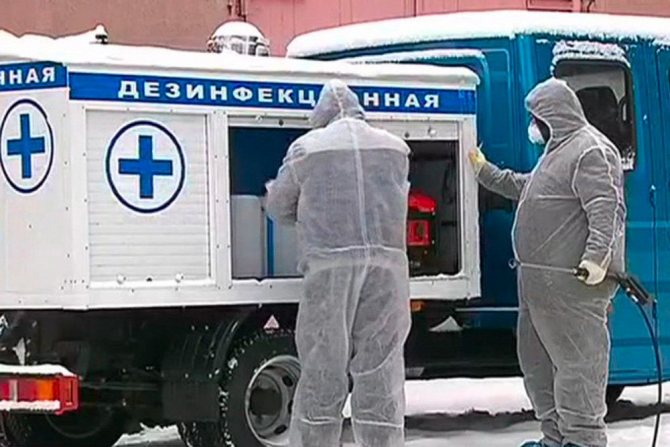

Disinfection service
Prices for disposable laminated coveralls
Disposable laminated coverall
Newcastle disease and man
The virus poses no danger to humans. Sometimes people who are in direct contact with sick chickens and other birds are infected. The infection enters the human body by airborne droplets: by inhalation of dust with strains. It is possible that the virus can enter the eyes with hands contaminated after working in the poultry house.
The incubation period of infection in humans lasts from 3 days to a week.
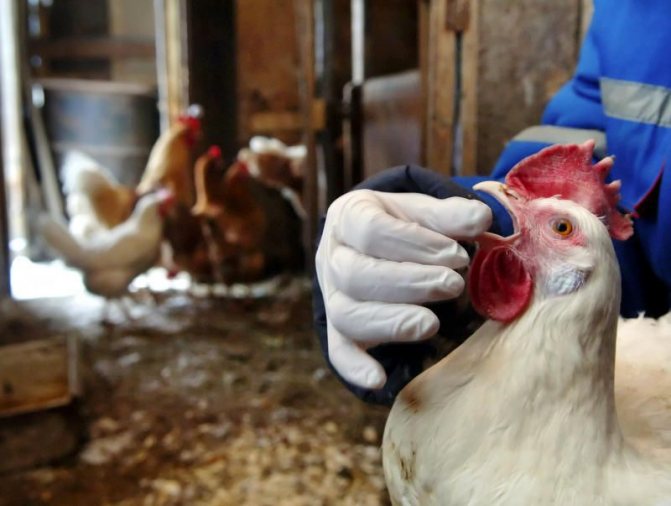

It is better to work in the poultry house with gloves.
Symptoms:
- flu-like symptoms (general weakness, nasal congestion, lack of appetite, slight fever);
- slight conjunctivitis with redness of the eyelids;
- mucous or purulent discharge from the eyes and nose (sometimes);
- diarrhea - sometimes, even less often - with blood;
- an infected child has brain damage in severe cases.
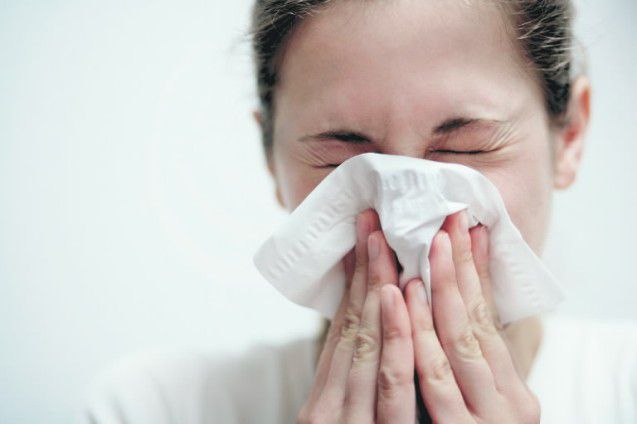

Human pseudo-plague symptoms are similar to flu symptoms
It is not difficult to protect yourself from bird disease. It is important to follow basic sanitary and hygienic rules:
- after working in the poultry house, be sure to wash with soap and disinfect your hands;
- poultry meat and eggs must be thermally processed before being eaten; they cannot be eaten raw;
- use a respiratory mask during aerosol vaccination of chickens or disinfecting measures;
- at the first suspicion of infection, consult a doctor.


Be sure to use a respiratory mask when vaccinating
Definition of Newcastle disease in chickens
Newcastle disease is common across the globe and is a threat to all livestock. Its second name is the Asian plague or pseudo plague of birds. The causative agent of the infection is paramyxovirus or Paramyxoviridae. People in contact cannot get infected, since the virus does not take root in the human body, but it still has a negative effect. A person develops a mild form of influenza, as well as redness of the eyes and purulent discharge, which quickly disappear with symptomatic treatment. Read about diseases of laying hens and their treatment here.
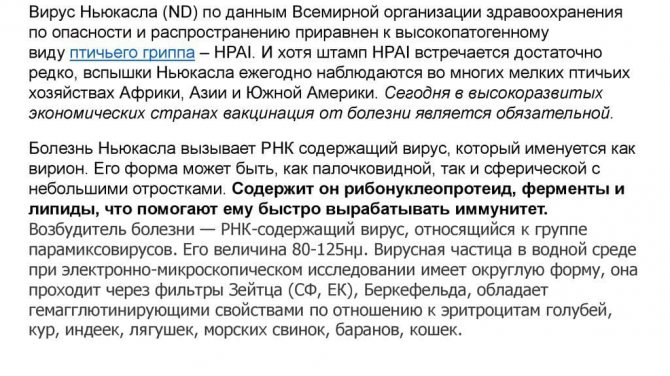

Newcastle chicken disease is characterized by the following:
- inflammation of the brain (encephalitis);
- pneumonia (pneumonia);
- damage to internal organs and hemorrhage.

